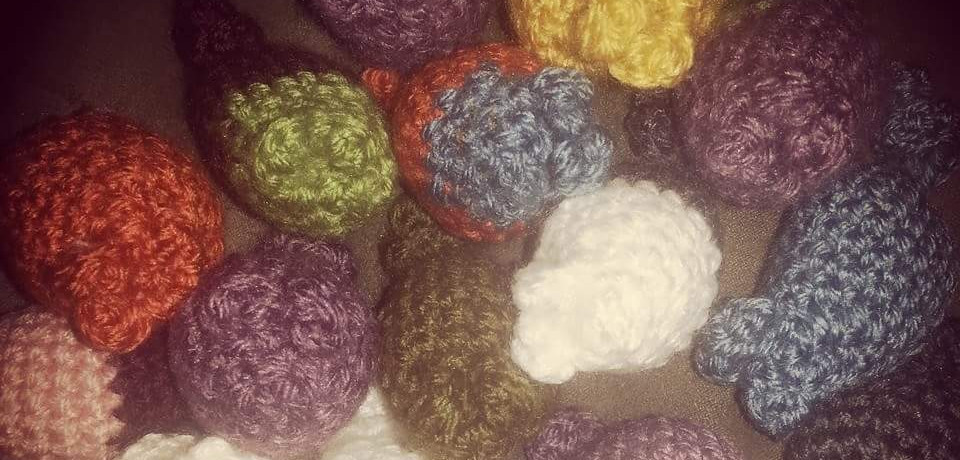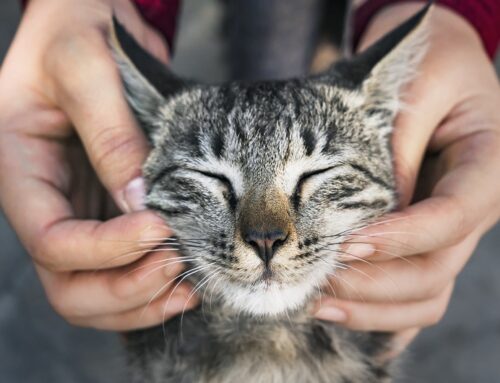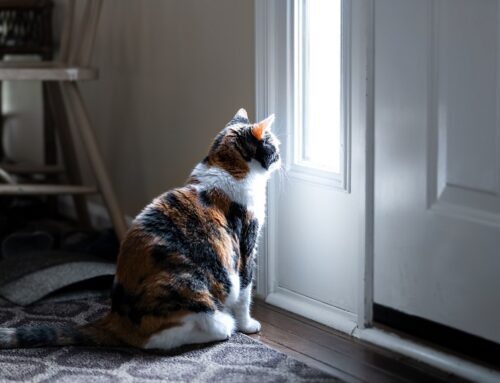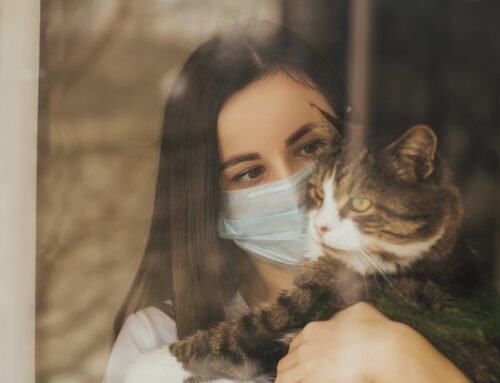Cats’ responses to catnip have long fascinated and entertained us… This month we will take a closer look at the plant that many of our feline friends love so much. “Catnip” is the common name for a perennial herb of the mint family. The plant has many other common names such as: cataria, catmint, catnep, catrup, catswort, and field balm. The scientific name is Nepeta catara.
Catnip is native to Europe and Asia, but it became naturalized in North America and Canada after being introduced by colonists in the 1600s. The catnip plant is now a widespread “weed” in North America. It is recognized by its square, hairy stalk and leaves which are typically green-grey colored and heart-shaped with scalloped edges. The flowers are white with fine purple or pink spots and are found to grow in spikes, reaching about a 1/2 inch in length.
So, what makes catnip so special to cats? No one knows for sure what actually happens in the cat’s brain; however, it is known that the chemical “nepetalactone” is what triggers the response. Nepetalactone is found in the stems and leaves of the plant. For cats, the most intense catnip experience is an olfactory one—in other words, they’re driven wild by the scent of it!
Interestingly enough, the catnip reaction is inherited, and only 50-60% of cats are affected by it. Older cats and younger kittens are less affected, and the trait doesn’t emerge until a cat is between three and six months old. Large cats can be sensitive to it as well: leopards, cougars, servals, and lynxes often react strongly to catnip in a manner similar to domestic cats! Yet, lions and tigers do not react as consistently.
Most cats have a stereotypical response to catnip: sniffing, chewing, licking, head shaking, and chin, cheek, and body rubbing. Other responses may include stretching, drooling, jumping, aggression and hyperactivity. Cats seem to chew on the plants to release more of the nepetalactone. It is thought that nepetalactone mimics feline “happy” pheromones, and when inhaled, stimulates the receptors in the brain that respond to those pheromones.
However, when eaten, catnip seems to have the opposite effect: cats may become very mellow. Catnip sessions last about 5 to 10 minutes, after which olfactory fatigue usually sets in. It can take 1 to 2 hours for the olfactory sense to “reset” and become susceptible to catnip again. Cats will not overdose on catnip, although some will “zone out” for a while.
Catnip can be purchased as dried leaves, in cat toys, and as whole plants. Catnip is somewhat easy to grow and can be purchased from many garden centers. It can also be grown from seeds, but the germination rate can be quite low. Catnip plants like light, sandy soil and full sun. The plants must be kept well-watered until they have become established.
As the plant is growing, growth tips can be pinched off to promote bushiness. Typically, the plant blooms from late spring through autumn. Additionally, catnip should be grown in several pots so that they can be rotated regularly for indoor cats.
Leaves can be taken from the catnip plant throughout the year. In order for them to properly dry, the leaves must be placed in the oven on very low heat or hung upside down in a dry, ventilated area away from sunlight. Leaves should crumble easily when they are ready. As dried catnip does lose its potency over time, it’s best to keep it fresh by storing it in the freezer in an airtight container or bag.
Catnip is not just for cats! Traditionally in humans, it has been used to treat headaches, coughing, insomnia, nausea, and wounds. Studies show that it has some natural healing qualities. When made into a tea, catnip is shown to have calming properties similar to chamomile.
Catnip also repels some insects! Concentrated nepetalactone is a natural mosquito repellent 10-times more powerful than DEET (the most widely-used chemical repellent.) Unfortunately, research suggests that it is not as effective as a commercial repellent when used on the skin, and it only lasts a few hours. Still, the oil isolated from the plant by steam distillation repels mosquitoes, flies, cockroaches and termites. In fact, some insects and ants also contain nepetalactone, presumably to protect them from other insects!
In case you and your cat are interested, we do carry catnip and catnip toys at our clinic! (Special thanks to Slickery Blends for the photo of the catnip toys sold at Cats On Broadway!) =^_^=








